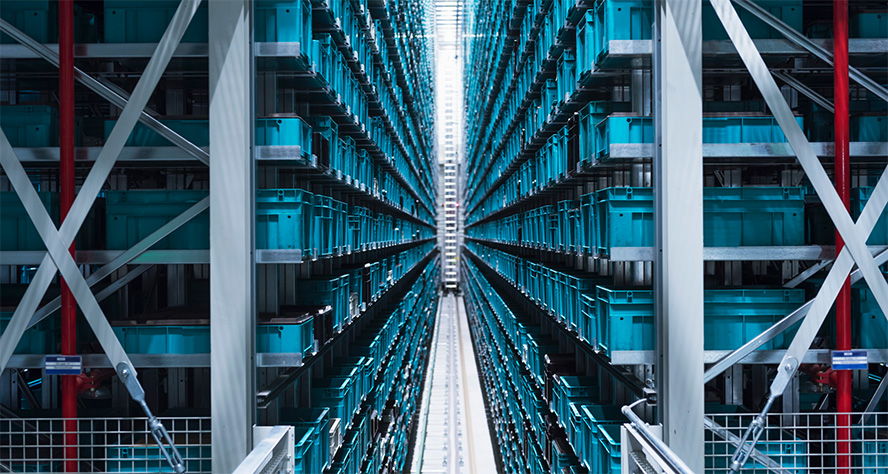The logistics real estate business has been at the heart of a perfect storm, with long-term megatrends and current events all driving increased demand for warehousing, from both occupiers and investors. And while some short-term factors are set to ameliorate, the sector has the wind behind it for the foreseeable future.
Savills data show record take-up for logistics in 2021 in both Europe (where 38 million sq m of take-up was 28% above the five-year average) and the US, while the average logistics vacancy rate has fallen to 3.5% in Europe and 4.4% in the US.
Record investment in logistics
Meanwhile, logistics yields have fallen 70 basis points during the Covid-19 pandemic, while 2021 saw global logistics investment of £237 billion, according to Real Capital Analytics. This beat the 2020 total, a record at the time, by £81 billion. “The need for additional industrial space is so great that we are even seeing some Class A office space being torn down and converted into industrial sites in the US,” says Gregg Healy, Head of Savills Industrial Services, North America. “That is now considered the best use of the space. Warehouse space under construction in the US is more than 700 million sq ft. It won’t be enough.”
E-commerce drives growth
The main driver of growth continues to be e-commerce. It was rising strongly before Covid-19 and then expanded rapidly during the pandemic. Growth has since slowed but Savills still expects European online sales will be 25% of the total in 2025, compared with 15% in 2020. Warehousing specialist Prologis estimates each extra €1 billion of online spending requires a further 77,000 sq m of warehouse space.
Marcus de Minckwitz, Head of EMEA Industrial and Logistics, Savills, says: “E-commerce in the UK was about five years behind the US, and Europe is about five years behind the UK, so we have very strong growth ahead. Amazon is only recently established in Poland and Spain, for example.”
Jack Harkness, Director, Industrial & Logistics, Savills Asia-Pacific, adds: “Logistics real estate across Asia-Pacific is still underdeveloped in many countries. This, plus rising e-commerce penetration rates and rising wealth across the region means the sector’s foundations are strong.”
Tech solutions will emerge
The pandemic disrupted supply chains across the world, with the US and UK particularly impacted, suffering congested ports and a shortage of lorry drivers. Supply chain uncertainty means retailers and manufacturers are holding more inventory, which requires more warehousing space. “The market has seen the challenges that have been brought about by the global pandemic as an opportunity to integrate a higher level of technology in the industry and although we will continue to see challenges, technological solutions will emerge to attack future supply chain challenges,” says Healy.
Technology and innovation will be needed to help meet the market’s prime challenge: supply. Savills European Logistics and Industrial Real Estate Census 2021 found lack of supply and zoning for new supply were the key challenges for market participants. There is little chance of this changing, which supports continued rental growth.
Looking at the UK, for example, industrial and logistic rental growth ceases when the vacancy rate hits 12% and the balance of power shifts toward occupiers. For the UK vacancy rate to hit 12%, the market would need an injection of 7 million sq m of unoccupied space. This is practically impossible, as the record for the most UK warehousing space delivered in a year is 2 million sq m.
Even in Asian markets, where supply can be added rapidly, the market is expected to remain short of space. Harkness says: “There may be very localised examples of temporary oversupply, but most markets remained undersupplied with large modern logistics facilities, and land constraints in most markets mean this is unlikely to change.”
We will see more multistorey warehousing in Europe, especially in the best sites close to major cities
With such a gap between supply and demand, strong rental growth can be expected across the world and occupiers are likely to tolerate this, says de Minckwitz. “Rising rents are a concern for warehousing occupiers, however they are only a small part of their overall costs, at an average of 5% of their overheads – transport and labour are far more significant. A small saving in these costs would more than balance out substantial rent rises.
“The pressure on supply will force both occupiers and developers to innovate. We will see more multistorey warehousing in Europe, especially in the best sites close to major cities. Occupiers will use automation to boost efficiency and reduce labour costs.”
A potential cloud on the horizon for rental growth is the possibility of falling demand driven by declining consumer confidence from higher inflation or from a global recession, perhaps triggered by the escalating conflict in Ukraine, or geopolitical crises elsewhere. However, in the longer term, even this could be outweighed by a reorganisation of global supply chains to bring them closer to the consumer and a change from just-in-time to just-in-case inventory management. Indeed, as this supply chain evolution was driven by the upheaval of Covid-19, it seems likely that further geopolitical conflict would accelerate change.
A move to nearshoring production would benefit industrial markets in developed nations, while continued GDP growth and e-commerce penetration in developing nations means demand for warehousing will increase even if manufacturing declines. There is little sign of the perfect storm clearing.



